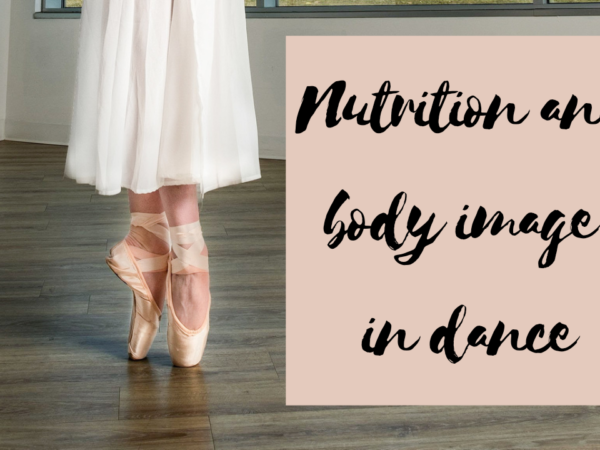Let’s talk about carbs, baby! And why they are good for you and me! Carbohydrates get a bad reputation in the world of keto and paleo, but this macronutrient is extremely important for the proper function of our body. Usually, when people think of carbs, they think of bread, pasta, sugary cereals, and processed snacks, but there are so many whole food carbohydrate sources that are packed with vitamins, minerals, and fiber that keep your body fueled for dance.
Without getting too sciency, let’s break down carbohydrates. Carbohydrates are our body’s main source of energy. During digestion, all carbohydrates are broken down into simple sugars – glucose – to be distributed through the bloodstream to our cells for energy. How quickly this process happens depends on the type of carbohydrate, more on this a little later. Carbohydrates not only fuel our muscles, which is important for our energy levels and performance level in the dance studio, but they also power our brain, meaning that it helps with our concentration and mental clarity during classes and rehearsals. Carbohydrates also contain fiber, which is a part of the carbohydrate that cannot be broken down into glucose. Fiber slows the absorption of glucose, which is energy, into the bloodstream to help us avoid a spike in energy. Fiber also helps us to regulate our digestion and bowel movements.
It is recommended to get 45%-65% of your daily caloric intake from carbohydrates. The amount of carbohydrates you need will be different from someone else, and it can even be different for you day to day depending on your dance schedule and activity level. This is where intuitive eating can be helpful, because you can assess day to day and meal to meal what your body needs.
There are three different types of carbohydrates, and as we mentioned earlier, they are broken down differently depending on their structure. Simple carbohydrates are made up of small compounds so they are broken down into glucose quickly by the body, giving us fast energy. These are in foods like fruit, honey, dairy, and sugar. When you eat a simple carbohydrate, like an apple, alone, you might find that you get energy quickly, but it does not last long. You might also feel full after eating an apple, but might find yourself looking for another snack 30 minutes later. Fruit does have fiber, which slows the absorption of glucose into the body, but on its own, it is not a substantial snack or meal. Simple carbohydrates are great when paired with complex carbohydrates, fat, and/or protein.
Next up, complex carbohydrates. Complex carbohydrates live up to their name. They contain larger compounds, starch, and fiber, that take more time for the body to break down into glucose, digest, and absorb into the body. This means that complex carbohydrates provide more stable, long lasting energy and hunger levels. Whole grains like oats, brown rice, whole wheat, barley, and couscous are a part of the complex carbohydrate family. Pseudograins like amaranth, quinoa and buckwheat are also in this group. Vegetable, starchy veggies, beans, legumes, peas, nuts, and seeds, are also complex carbohydrates. Each of these whole foods is also packed with vitamins, minerals, and antioxidants that support our body’s many functions.
Lastly we are going to talk about refined carbohydrates, which are carbohydrates that have been broken down in the manufacturing process and have had part of the whole food removed. Usually, the fiber has been removed, meaning that refined carbohydrates are broken down quickly into glucose. They can often lead to a quick spike in energy but can lead to unstable energy and hunger levels when eaten by themselves. They also tend to not be as nutritionally dense as their whole food counterparts. These are foods like white rice, white flour, white bread, white pasta, as well as cereals, crackers, and other packaged goods. These types of refined carbohydrates can actually be useful for dancers when paired with some protein and/or fat. They provide calories and quick energy that dancers often need in between classes and rehearsals. Refined carbohydrates are also foods that have added sugar in them like baked goods, candy, and many processed foods and snacks. Now I want to be clear, these are not bad foods, nor should they be completely restricted! Instead, I want you to think about them in terms of fueling your body. Think about if you only ate a big slice of cake for lunch in between rehearsals. You would probably start rehearsal with a lot of energy, but you might also experience an energy crash soon after. You might also experience hunger an hour later. Eating only cake for lunch might also give you a headache or stomach ache, which is just not fun to try to dance with. So, only having that slice of cake for lunch might not make you feel your best while dancing, but having a small slice of cake to enjoy after a nourishing meal post dance? Absolutely! These foods are great to enjoy in moderation and truly savor the taste and experience.

When looking at all carbohydrates, we might have ones that we prefer, and we might have some that we have applied food rules to. When learning to eat carbohydrates intuitively, it is important to not look at one type of carbohydrate as “off limits”, but to see how our bodies use them differently. Notice how they make you feel! Simple and refined carbohydrates, when eaten by themselves, might make us have unstable hunger or energy levels, but eating a meal or snack that combines them with other complex carbohydrates, protein, or fat can provide energy and nutrition for a dancer during a long day. Complex carbohydrates are important for their fiber and nutrient content. Focusing on complex carbs before and after dance will help to fuel our bodies for a long day and then help to replenish our energy stores after dance. Lastly, refined carbohydrates that have added sugar are those foods that we can enjoy in moderation purely for the pleasure of them. When we eat a lot of them, or rely on them to make up the bulk of our meals or snacks, we might feel like our energy levels, hunger levels, or even mood are affected by them. But enjoying a little bit every day is an important part of life. Restricting these might lead us to overeat them when they are available, making us feel out of control. Read more about that here.
Before dance, think of integrating complex carbohydrates like oatmeal, quinoa, or other grain into a sweet or savory breakfast bow. Or you can have whole grain toast or cereal with other foods! You can add veggies in the form of an egg scramble or roasted potatoes, or you can add fruit to your breakfast. During a dance day, think about having carbohydrates that are quicker to digest. Remember to eat these with protein and/or fat for staying power! Having a sandwich, pasta salad, smoothie, granola with yogurt, crackers and hummus, dried fruit in trail mix, or a piece of fruit with nut or seed butter are great options. After dance, it is important to replenish the body, so complex carbohydrates are great to have here. Whole grains, veggies, starchy vegetables, and nuts and seeds are great to have here. If you want dessert or a favorite snack food with one of these meals or snacks, then do it!
There are so many ways that we can incorporate carbohydrates into our meals and snacks to fuel our dancing. Carbohydrates support our energy, brain function, and digestion, and so they are an equally important macronutrient to eat. Coming up, we will be talking about protein and fat, how they support our bodies, and what are some ways to incorporate them into our meals and snacks. Until then, experiment adding in different carbohydrates into your day!





[…] to take an intuitive look at your body in exploring your bio-individuality. This is the start a nutrition series where we will take a deeper look at topics such as the difference between dieting and healthy […]
[…] macronutrients: carbohydrates, protein, and fat. I have more in depth posts about each one of them here. So if you want to learn more, be sure to check those out. I also have a download that I created to […]